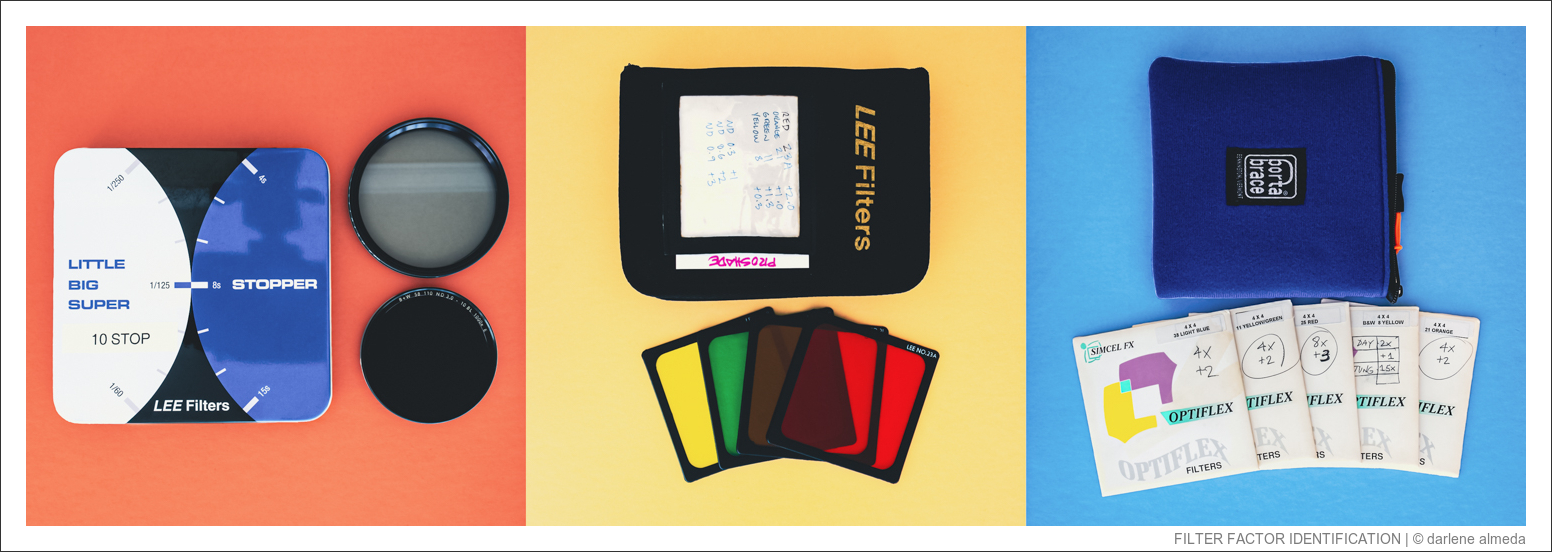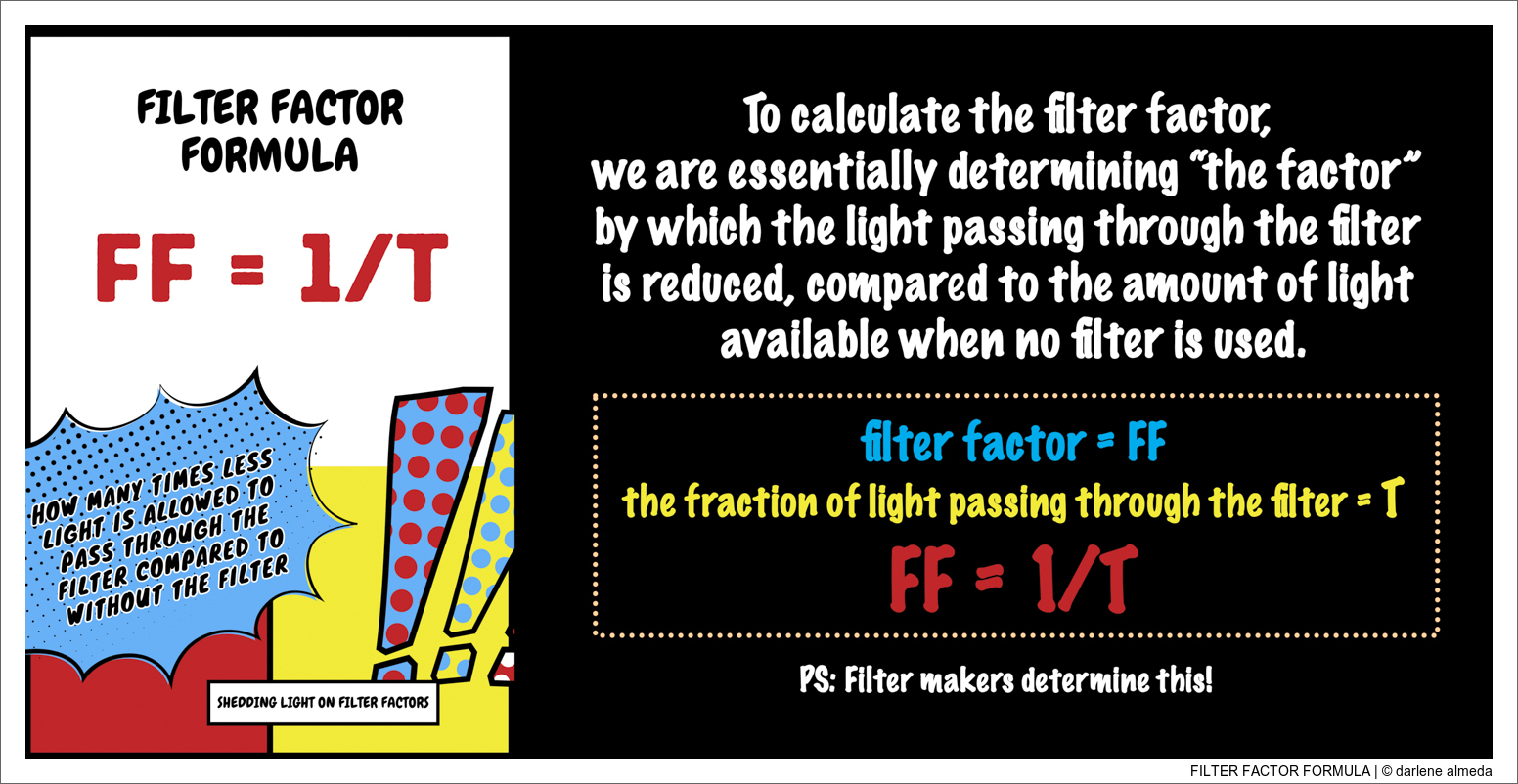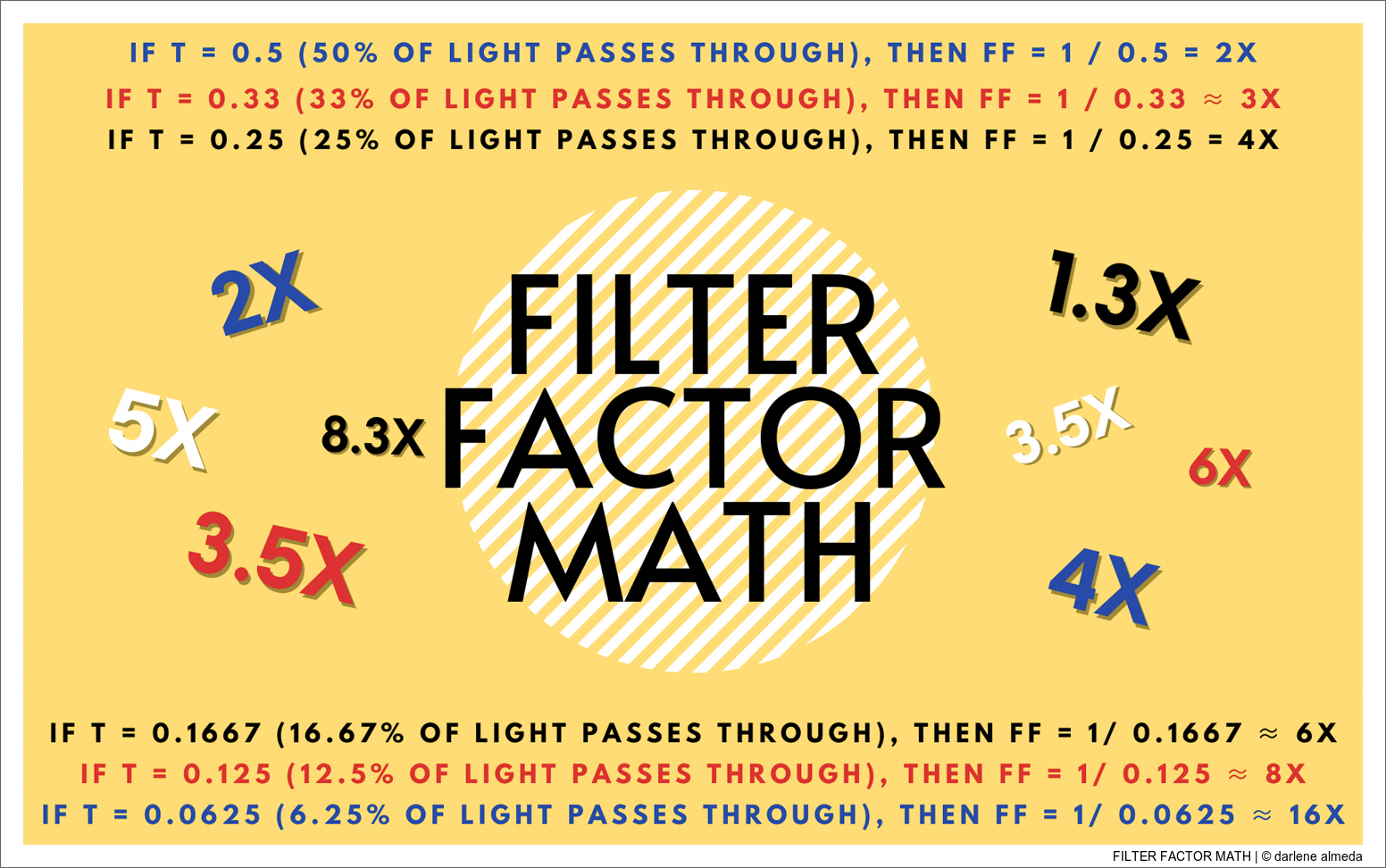FILTER FACTOR IDENTIFICATION: ON FILTER, ON CASE, ON PACKAGE
Intro
The filter factor is a way to measure how much a filter reduces the amount of light that reaches the camera sensor or film. It’s usually represented as a number, such as 2x or 3x, indicating the extent of light reduction.
By understanding a filter’s factor, we can determine if the exposure needs to be adjusted. Some manufacturers indicate these factors on their filters — they might be located on the top right corner of rectangular or square resin filters or the outer rim of circular ones (see Image 1). However, a lot do not. Regardless of whether the factor is provided, it’s essential to determine it for each filter before use.
In Image 2, you can see some of my LEE polyester filters housed in frames. Since these filters don’t have factors imprinted, I’ve noted them down on a card and tucked the card in the case’s front pocket. This makes it easy to reference the factors when shooting. After a few times of use, I have them memorized, which is optimal.
Image 3 displays factor numbers hand-inscribed on the cardboard protectors provided by the manufacturer. I acquired this set second-hand and am grateful that the previous owner marked the factors. Their annotations align with my tests; having them on the outer cardboard protectors is handy.
This article delves into filter factors, their purpose, and how to utilize them. Let’s get to it.
Filter Factor Calculation
FILTER FACTOR FORMULA
The mathematics of photographic exposure is governed by the Inverse Square Law of Light Intensity. This principle indicates that when you double the distance from a light source, the light intensity you receive drops to a quarter (1/4) of its initial value.
The same principle applies to filters. If a filter reduces the light intensity by a certain factor, it means it allows only a fraction of the original light to pass through.
Filter manufacturers determine filter factors by calculating how much the light transmission is reduced when using the filter compared to when it’s not in use.
The formula for the filter factor (FF) is as follows: FF = 1 / T
T represents the fraction of light transmitted through the filter. It’s usually expressed as a decimal. For example, if a filter allows 50% of the light to pass through, T would be 0.5.
You get the filter factor when you take the reciprocal of T (1 divided by T).
Examples are shown in the graphic below.
FILTER FACTOR MATH
Three Methods of Applying Filter Factors to Exposure
Understanding your filter’s factor allows you to adjust your photography settings accordingly. You can apply it using one of the following three methods.
THREE METHODS FOR APPLYING THE FILTER FACTOR
(1) ISO Adjustment with Filter Factor (FF)
Divide your ISO speed by the filter factor to determine the effective film speed.
2x Example:
(*) Filter factors of 2, ISO 100.
(*) The effective film speed becomes 50.
(*) Set the light meter to ISO 50.
FILTER FACTOR 2x
(100 ÷ 2) = 50
= ISO 50 (or ASA for film shooters)
another example:
4x Example:
(*) Filter factors of 4, ISO 100.
(*) The effective film speed becomes 25.
(*) Set the light meter to ISO 25.
FILTER FACTOR 4x
(100 ÷ 4) = 25
= ISO 25 (or ASA for film shooters)
(2) Shutter Speed Adjustment
First, identify the necessary exposure without a filter. Then, multiply the shutter speed without the filter by the filter factor.
Example: If the exposure without the filter is 1/60 second and the filter factor is 3, the required exposure becomes 1/20 second (calculated as 1/60 x 3). However, since most cameras lack a 1/20 second setting, you’d typically use 1/15 second or the closest slower shutter speed available.
FILTER FACTOR 3x
(1/60 x 3/1) = 3/60 = 1/20
1/20 => 1/15 closest shutter speed
another example:
FILTER FACTOR 6x
(1/60 x 6/1) = 6/60 = 1/10
1/10 => 1/8 closest shutter speed
(3) TTL (Through-The-Lens) Metering
Procedure: Attach the filter to the lens for SLR cameras equipped with TTL metering and adjust your exposure as usual.
Note: Some filters, particularly those in dark blue, red, or orange, might produce inaccurate readings with TTL systems. This is because the meter typically reads 18 percent gray and might not detect certain light colors transmitted by the filter.

Filter Factor Equivalent Exposure Table
FILTER FACTOR EXPOSURE TABLE – CLICK FOR LARGER IMAGE
Summary
In essence, the filter factor quantifies the reduction in light that passes through a filter. It’s derived by taking the reciprocal of the proportion of light the filter allows through. This factor assists photographers in adjusting their exposure settings, ensuring their images turn out as intended when filters are used.
NOTE: Filters with identical names and types from different manufacturers might have varying filter factors, even if they’re crafted from the same materials.
For instance, Tiffen’s Orange #21 has a filter factor of 4.5x, while LEE Filter’s Orange #21 stands at 2x. Click on each to see a comparison.
Once you’ve acquired your filters, it’s prudent to test their accuracy in terms of exposure factors. If the factor isn’t printed on the filter, jot it down on the filter case or a handy card. You’ll appreciate the foresight later!
Author’s Note: It’s rewarding to know that insights from this article have found their way to Wikipedia’s “Filter factor” entry, contributing in a small way to shared photographic knowledge.





